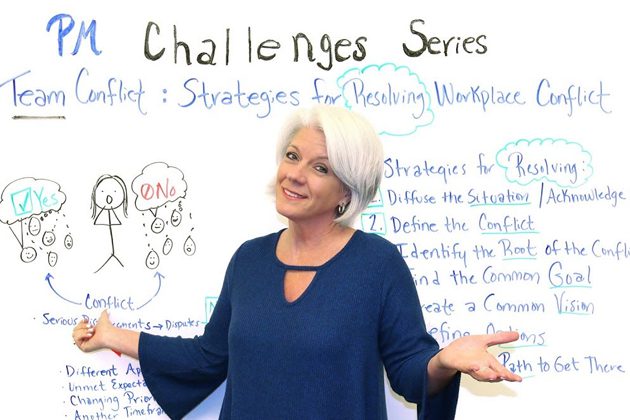
by Content Team | Dec 16, 2022 | Changing Personal Habits
As the days start to become shorter and the temperature drops, many people’s spirits begin to dip. Even if you don’t have Seasonal Affective Disorder, adjusting to the shorter days can be very challenging. However, the advice below can make a difference if you’ve ever felt “blah” at the start of winter as darkness falls.
- Protect your sleep.
Infrequently getting enough sleep might increase your risk of developing anxiety and depression, which can also be its symptoms. However, the winter months can cause even more sleep disturbances than usual due to scheduling for holidays, travel, or daylight saving time. But if you can try to protect your sleep in any way—have a more regular bedtime by making an effort to put your devices away a little earlier, use blackout curtains if the early morning sun is causing you to wake up earlier, or spend a little extra time making your bedroom as comfortable as possible in terms of temperature and sound—it can make a significant difference on your mood.
- Maximize your natural light.
You must make the most of the sunlight you can during the winter; even five minutes of it might make a difference. This entails eating lunch outside, going for more walks, and working while seated by windows. Simple schedule adjustments can be helpful for some people, such as going to bed a bit earlier to wake up a little earlier to soak it in.
- Prioritize social connection.
One of the finest things that can do for our physical and mental health is to have healthy relationships with other people. Increased darkness frequently results in a greater subjective sense of isolation and an actual increase in isolation. For example, when it’s chilly outdoors, people walk their dogs faster, spend less time outside, and are far less likely to congregate in public places. Making plans to spend time socially with those who make you feel lighter can help you combat this because these connections are pretty good for your health.
- Stay close to nature.
We all know how beneficial nature is to us; therefore, when we experience seasonal symptoms, we tend to spend less time in it, which makes us feel down. In addition, we can become more worried and less calm if there is more fluorescent lighting, less ventilation, less open space, and less greenery. Therefore, allowing plant life to grow in addition to the sunlight we already discussed is useful.
Did you know that recent studies have found that indoor plants can genuinely elevate mood? So try to bring some of the outsides inside. And it’s much nicer if you can go on a winter trek, run and jump in some leaves, or just bundle up and enjoy a stroll.
- Plan a break.
The reason experiences are better gifts than items is probably due to the added anticipation of having the experience and the joy of remembering it later. Still, with objects, we may rapidly become desensitized to them. A gift in and of itself is the anticipation of a vacation. Even if you lack the funds or the ability to take off enough time from work to take a real break, organizing a particular adventure or experience might greatly lessen your wintertime blues.

by Content Team | Dec 15, 2022 | Changing Personal Habits
Everyone experiences social anxiety at times. But if you have a social anxiety disorder, regular activities can be more difficult (also called social phobia). As a result, you may experience low self-esteem and feel considerably more uncomfortable and afraid in social situations than others.
But resist the urge to let fear prevent you from living fully. The disorder of social anxiety can be treated in several ways. To feel better, try these five suggestions. Additionally, some people require specialist assistance to overcome their social anxiety.
5 Tips to Overcome Social Anxiety
Here are five of those methods that can assist you in controlling and overcoming social anxiety. Check what works for you!
- Understand your triggers.
Explore your social anxiety triggers as one important piece of advice. Do you mean public speaking? Crowded locations? Unwanted notice? Understanding what situations set off your anxiety in the first place and devising strategies to practice these situations appropriately is essential to conquering social anxiety.
- Face your fear.
After you’ve identified your triggers, you may make it a priority to face your anxieties. Start small and work your way up. You can start by registering for an online dating site if you experience social anxiety when dating. Then progress upward. Recognize your ability to overcome obstacles. Consider the most challenging thing you have ever accomplished. What was your method? What was useful? Make use of those tools to assist you in overcoming your worries.
- Practice visualization exercises.
Attempt to picture oneself performing well in social environments as well. This will give you more self-assurance as you engage in social meetings. Regularly practice visualizing techniques. Imagine yourself in social settings, having a lovely time, interacting with others, and feeling comfortable in your skin. With visualization, you may train your brain to believe it has successfully dealt with similar situations, making you feel more assured.
- Write down your thoughts.
If you want to overpower social anxiety, try writing your thoughts down. Writing down your ideas to gain some perspective on them is a terrific idea. You’ll probably discover that most of what’s causing you anxiety falls into one of two categories once you get a view. Either you have no control over them, or they won’t happen. Make it a routine to write down your worries and to mentally refer to them as “anxious” feelings. Then, you’ll have the perspective you need to ignore your anxiety rather than surrender to it.
- Be mindful.
Try to be more mindful! Being mindful involves completely perceiving the current moment and your surroundings. By practicing mindfulness, you educate your brain to be more present and less in your head.

by Content Team | Dec 13, 2022 | Self-Awareness
We live in a world that emphasizes negativity, which is one of the biggest hindrances to retaining positivity. There are a lot of awful occurrences and whiny individuals everywhere—in the news, on social media, in office gossip, etc.
The fact is that spending a lot of time with negative people will control you from living a positive life. But there is a simple fix, which is wonderful news! Be in the company of uplifting individuals. Here are five incredible things that will occur from surrounding yourself with good individuals.
- Your Attitude Will Change
Being with your positive pals gives you a boost of energy and enthusiasm. As a result, your outlook changes to one of assurance and tranquility. Spending time with negative individuals may negatively impact your attitude, but spending time with good people will enable you to cope with challenges while smiling.
- You Will Accomplish More
When you and your buddies are together, try your best to be positive. Because if they are encouraged to believe they can, they achieve more than they ever imagined. You, too, will! Having someone tell you that you can accomplish more will encourage you to do so.
- You Will Make More Friends
Consider your present social circle. You’ll find that optimistic friends have many more friends than negative friends. Most of us enjoy hanging out with happy, upbeat people who are the life of the party. So stay around with positive people!
- You Will Be Consistently Happy
True happiness comes from within. This internal mindset is easily controllable. Most of us let external factors determine our happiness in life. We operate on autopilot, and it’s typically a bad one. However, regular exposure to positive motivations will shift your default mood to the happier side. You will consistently be more comfortable if you make an effort to surround yourself with good individuals.
- You Will Live Longer
This is a major one. You’ll live longer thanks to the good influences of your pals. Studies have revealed that positive people tend to live seven or more years more than negative ones, according to Dr. David R. Hamilton. Positive people are better at warding off illnesses and have fewer chronic health issues. Positive thinking impacts how long you live.
Final Thoughts
Don’t just cut ties with your unfavorable relatives, friends, and coworkers. That might not be wise or nice. But do attempt to spend more time with those with a good outlook. It all depends on how much you give to others, how successful you are, and even how long you live.

by Content Team | Dec 8, 2022 | Changing Personal Habits
Any connection that succeeds is built on trust. It is determined by how much faith we have in a person’s integrity, openness, and dependability. A high level of trust is the glue that binds individuals with the confidence that they will treat us correctly. Conversely, a lack of trust can destroy a possible new connection or bring about the end of an already established one.
Ways to Build Trust
You must operate in ways that actively seek other people’s trust to earn it. The main factors for failure in your behavior are insincerity and inconsistent behavior. Trust can be difficult to earn and simple to lose, so be serious about your approach.
- Be true to your words.
You must establish a trust to gain others’ belief in what you say. However, remember that creating trust necessitates both keeping your word and refraining from making promises you won’t be able to meet.
People will be more inclined to treat you with respect if you keep your word and demonstrate what you expect from them, increasing their trust in you.
- Learn to communicate effectively with others.
A major contributing factor to bad relationships is a failure in communication. Making your commitments and agreements clear is an important component of effective communication.
Trust-building involves risk. It entails allowing others to take risks as well as yourself to show your reliability. Again, effective communication is essential for navigating this.
- Remember, it takes time to build and earn trust.
Trust-building requires constant effort. Avoid the error of having too high of expectations too soon. Instead, take small steps and make little commitments to establish trust; as that trust increases, you will feel more comfortable making and accepting bigger obligations. In general, if you trust someone, they will trust you back.
- Take time to make decisions.
Make only commitments you are content to accept. Then, even if it disappoints someone, have the guts to refuse. Everyone is worse off if you agree to something, but can’t follow through.
Keep track of your commitments and be clear about what to do. Building trust with family, friends, and coworkers requires being organized. In addition, it permits you to decide whether to grant requests for your time and attention.
- Value your relationships.
Consistency typically leads to trust. People who are always there for us in both good and bad times tend to have our highest level of trust. A powerful technique to earn someone’s trust is regularly demonstrating your support for them.
- Always be honest.
You should always, always, tell the truth when you speak. No matter how tiny the lie is, it will damage your trustworthiness if you are found out.
- Don’t hide your feelings.
Building trust by being honest about your emotions is frequently successful. If people sense that you care, they will tend to trust you.
Building trust requires emotional intelligence. Building trust requires acknowledging your emotions, taking action after understanding the lessons learned, and not denying reality.

by Content Team | Dec 8, 2022 | Self-Awareness
Any workplace will have conflict. There will always be issues when you have diverse people working under pressure. However, there doesn’t have to be conflict; managers must hold a plan to deal with it if it affects the firm. While conflict can be a creative catalyst that produces team competition and increases productivity, it can also easily blow up and put a stop to things.
But how do you diffuse a conflict sparked by rage and other strong emotions that don’t respond to the reasoned discussion? There are approaches, but it’s complex. The below dispute-resolution techniques will assist you in resolving conflict.
- Define Acceptable Behavior
By establishing a standard of conduct at work, you can minimize or even altogether avoid possible issues before they even have a chance to arise. The team will describe what is and isn’t appropriate if you give them the freedom.
You must, however, establish the tone as the manager. For example, writing detailed job descriptions, developing a discussion framework, identifying the hierarchy and who is in charge of what, deciding which project management tools to employ, establishing suitable business procedures, assisting with team building, and leadership development are all ways to achieve this. The more rules you establish, the better the team will be able to follow them.
- Don’t Avoid Conflict
There are various ways you can handle conflict at work, depending on the type of management and person you are. Teams need to be able to work together, and one of the tools they’ll need for that is dispute resolution.
However, it’s a mistake if you avoid conflict because it makes you uncomfortable or because you don’t want to chastise someone. Of course, handling such issues is your responsibility as a manager. When necessary, you should use your power to take action. If this isn’t done, the conflict will merely gain momentum and escalate into a fight that will have a much worse effect on business.
- Start with a Compliment
You can deal with the issue once you’ve left where the conflict started. But you shouldn’t enter a conversation with an accusatory tone right away. It’s your responsibility to consider all arguments before reaching an executive choice based on the available information and the task at hand. Therefore, complimenting someone makes them feel at ease enough to speak. There is neither a good guy nor a terrible guy here, and you want to demonstrate. You’re going for the issue rather than the individual.
- Don’t Jump to Conclusions
Any disagreement usually has deeper roots than the first meet the eye. It’s best to hold off on drawing conclusions at first to treat everyone involved fairly. Give everyone a chance to voice their opinion, even if you believe the conflict to be evident. You shouldn’t make any assumptions about other people. A silent investigator would gather your evidence before making your decision.
- Act Decisively
Keep in mind that effective dispute resolution requires time. After going through that procedure, it’s time to act, and you should act quickly. Take your time making a choice and leave the team waiting. It creates a negative precedent for your leadership. You risk losing the power you need to lead because you’re creating a gap at the top that will be filled by thoughts other than your own. So, after making a decision, follow through with it. Even if some people don’t like it, they will at least understand your position.












